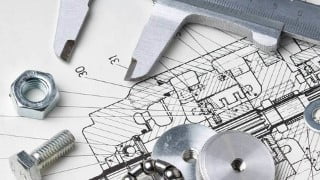Free Mechanical Engineering Tutorial – Engineering Metrology
Learn all about screw threads in this comprehensive course designed for Mechanical Engineering students and industry professionals. From the history of screw manufacturing to the various techniques used, this course covers everything you need to know. Discover accurate measuring instruments and ISO standards for screw thread measurement. Perfect for engineering students and workers in the field of metrology. Expand your knowledge and clear any doubts or misconceptions about screw threads with this informative course.
The screw thread concept seems to have occurred first to Archimedes, who briefly wrote on spirals as well as designed several simple devices applying the screw principle. In the 1500s, screws appeared in German watches, and were used to fasten suits of armour. In the 1800s, screw manufacturing began in England during the Industrial Revolution. In these times, there was no such thing as standardization. The bolts made by one manufacturer would not fit the nuts of another. There are many ways to generate a screw thread, including the traditional subtractive types (for example, various kinds of cutting [single-pointing, taps and dies, die heads, milling]; molding; casting [die casting, sand casting]; forming and rolling; grinding; and occasionally lapping to follow the other processes); newer additive techniques; and combinations thereof.
All the content of this course has taken on the real screw threads. With this course all your doubts and misconceptions about the screw will get clear. The knowledge of the screw thread is very important for the Mechanical Engineering students. This course will also benefit the industry person for refreshing their knowledge about the screw thread. The various chapters of the course cover all aspects of the screw thread measurement. Students will understand the screw threads at the application level. The measuring instruments shown in this course are accurate and follow the ISO standards. All the standard practices followed during measurement on the instruments.
Who this course is for:
- Engineering Students
- Worker on Metrology
User Reviews
Be the first to review “Free Mechanical Engineering Tutorial – Engineering Metrology”
You must be logged in to post a review.







There are no reviews yet.